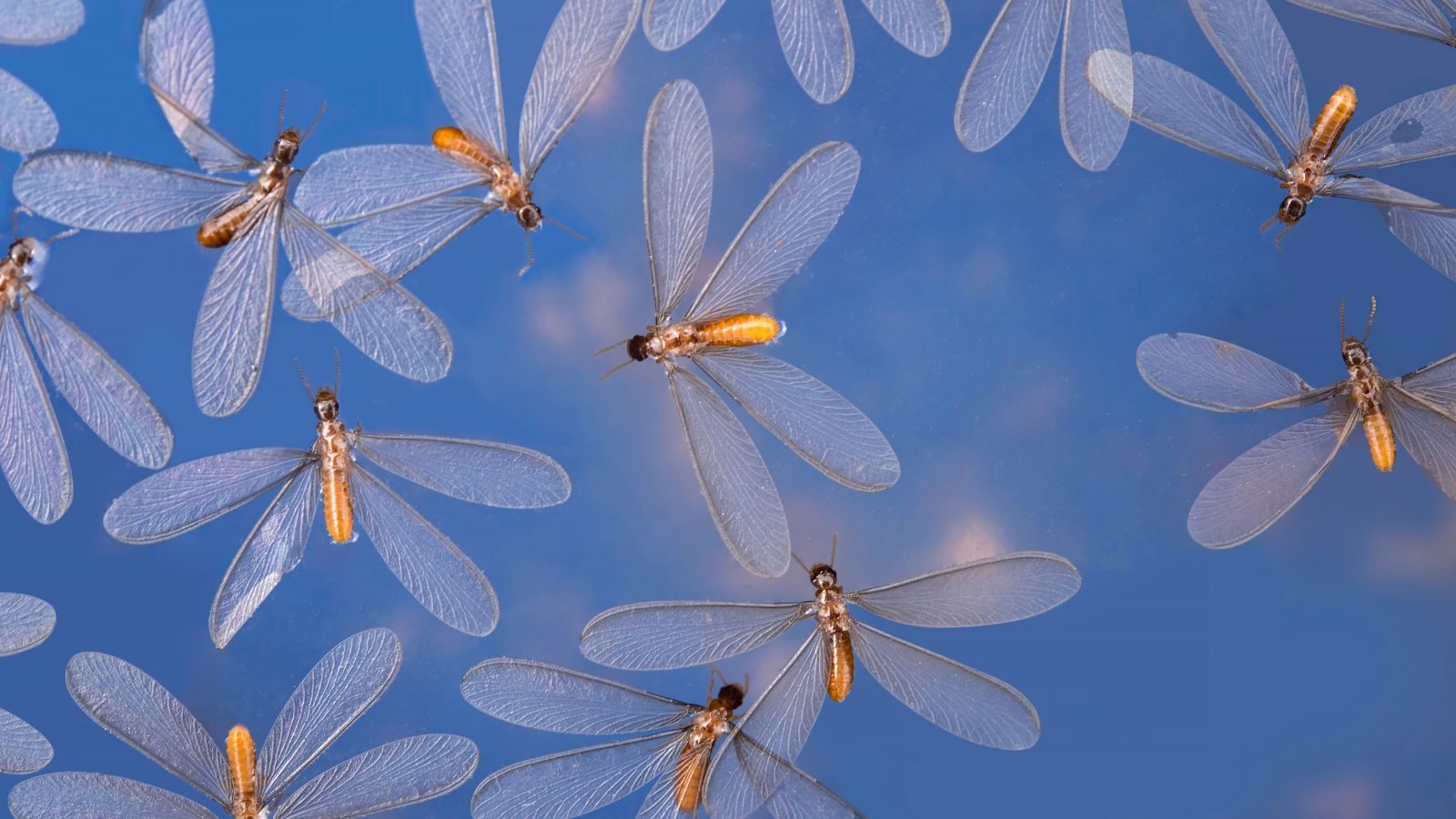
Winged termites, also known as swarmers or alates, can be a nuisance this time of year. They are the sexually mature males and females of the colony that are attempting to reproduce and start a new colony. Depending on their colony size and species, they can emerge in substantial numbers, ranging from hundreds to thousands.
Although their presence can be unsettling, especially if they swarm indoors, they do no real damage at this stage in their lives other than leaving their wings and some bodies behind. The real threat lies with the worker termites in the colonies they departed from. Hence, it's crucial to address the issue while they are still in the swarming stage before they mature into a more destructive force for your property, where you'll have to get rid of termites, which is not easy.
Much like getting rid of flying ants, eliminating these pests requires a diligent and strategic approach. By following these steps, you can effectively rid your home of winged termite infestations and prevent them from returning.
How to get rid of flying termites
'A termite swarm in your home is quite an alarming event as there can be thousands of insects emerging at once,' says James Agardy, ACE, technical and training manager for Viking Pest Control. 'Before we get into what can be done about it, it’s important that we talk about the swarmers themselves first.
'The winged termites are often called swarmers, and this is one of the ways a termite colony reproduces. During the spring, mature termite colonies will release winged reproductive we call alates, commonly known as swarmers. These alates will emerge, pair off to mate, and attempt to establish a new colony.
'Once they land, they will shed their wings and attempt to return to the soil. Oftentimes customers will not see the swarm but will find large piles of discarded wings. It’s important to note that these swarmers are not insects that do damage to the home. The worker termites are the ones that consume the wood and cause damage. The alates, however, are an indicator that there is a large mature colony in the area. Swarmers are easy to kill and can be dealt with a few ways.'
1. Identify them
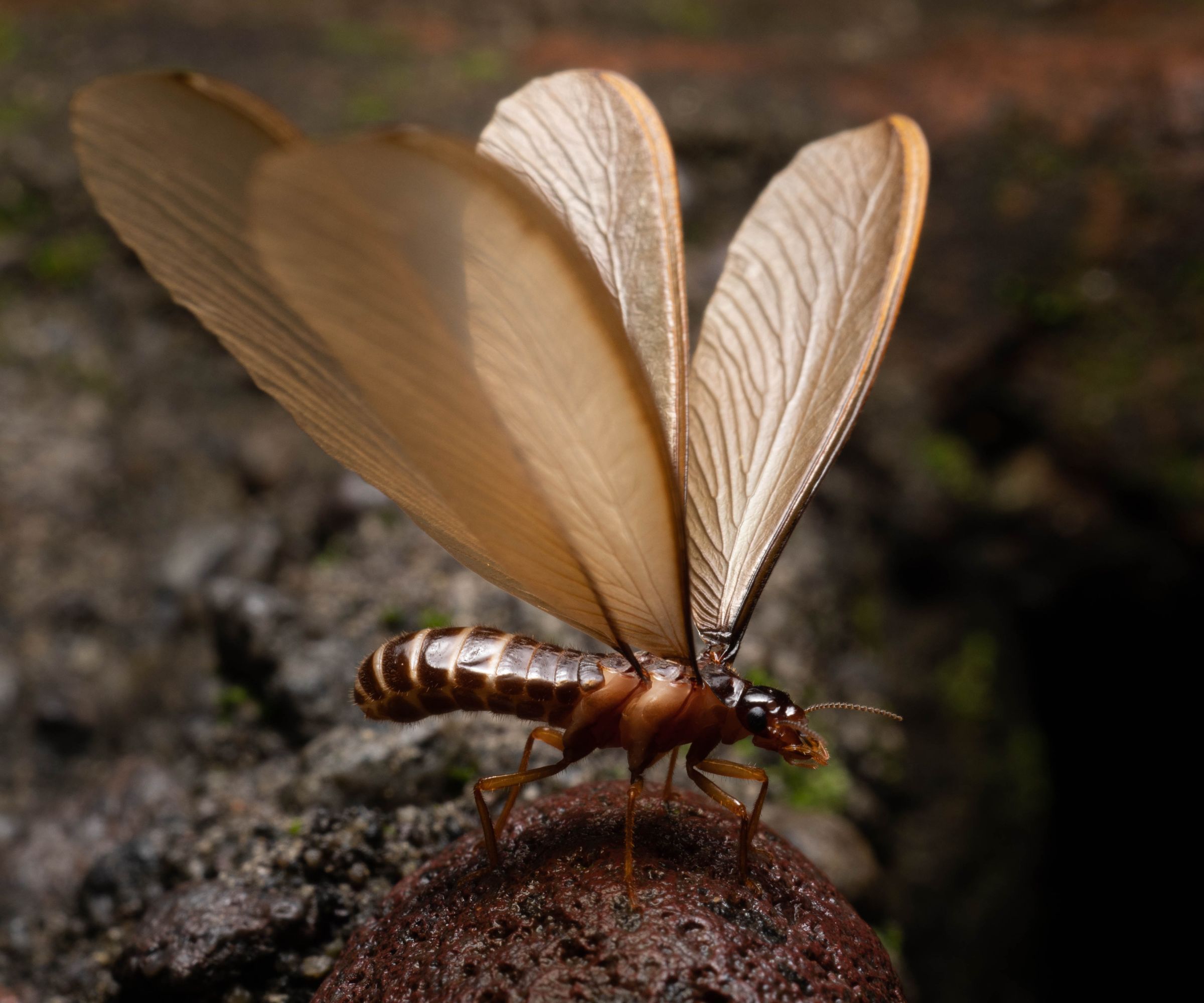
'Homeowners sometimes confuse termite swarmers with winged or flying ants that may emerge around the same time of the year as termites. Proper identification (ideally by a trained professional) is always highly recommended so any issues can properly be resolved,' says Damian Marcelo, an associate certified entomologist with Fox Pest Control.
So, how do you identify if you have termite swarmers? One thing that differentiates flying termites from flying ants is their two pairs of wings that are equal in size. Ants, on the other hand, have front wings that are larger than their hind wings. Unlike flying ants, they have straight, bead-like antennae, and broad waists.
2. Locate and address the source
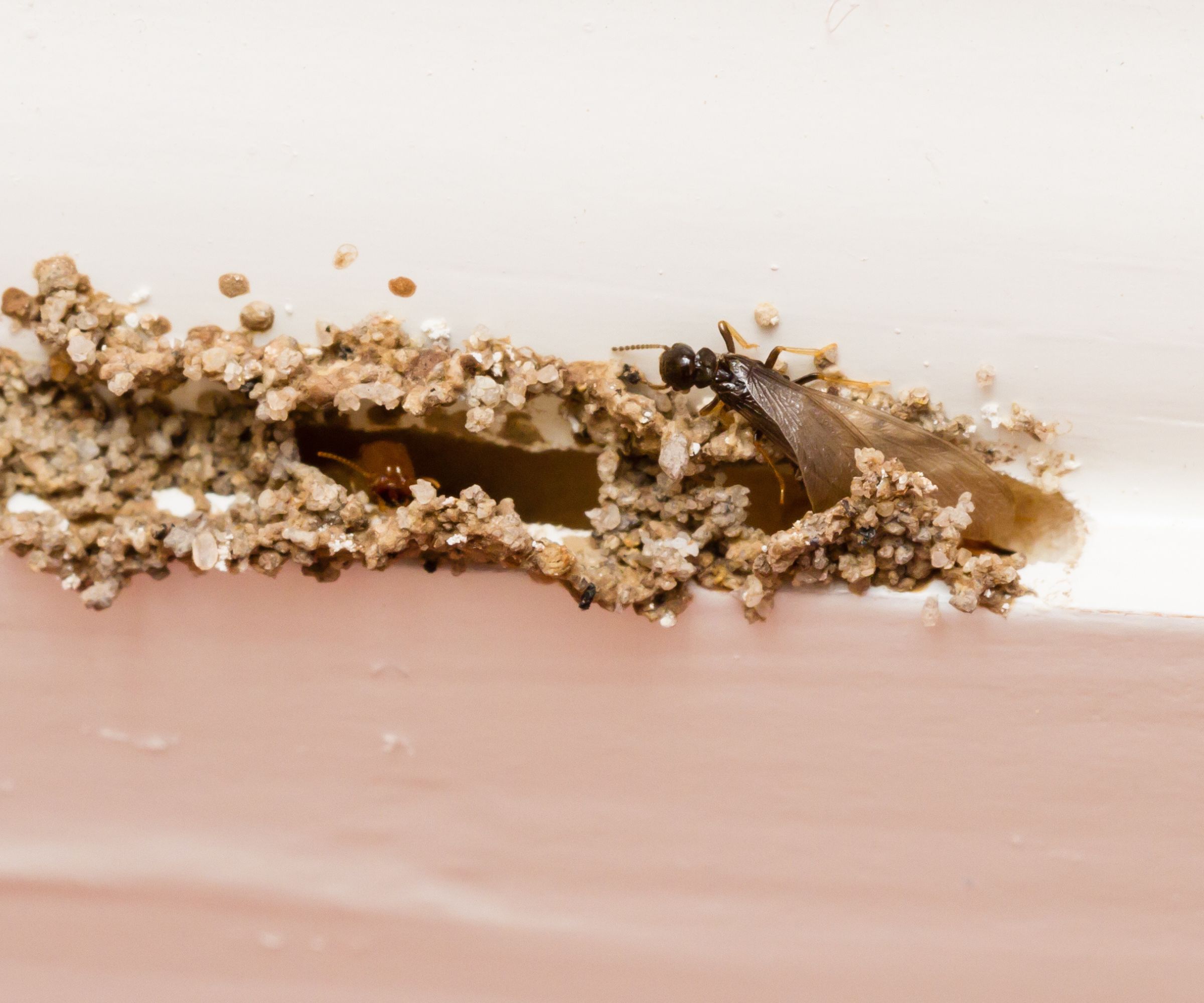
Determine where the flying termites are coming from. Look for signs of termite activity, such as mud tubes, damaged wood, or disregarded wings. Flying termites don't normally stray too far from their nest, so you might be able to locate those that are hidden by following them when you turn off lights.
You should also try to pinpoint what is alluring the flying termites to your home. Since they are attracted to moisture and wood, this may be a good starting point for your investigations, like when beginning to get rid of carpenter ants. If you notice them frequenting certain areas of your home, this should give you a good indication of the source of their interest in your home.
Seal entry points
If you notice flying termites in your home, and you can't attribute their presence to doors and windows that have been left open, chances are they're getting into your home through cracks and crevices.
Prevent further flying termites from entering by sealing any cracks or crevices in your home's foundation, walls, and around windows and doors. If you are unsure where these may be, try to keep an eye out for where they are entering or exiting your home – they might just lead you to their secret passageway!
Remove moisture and wood sources
Since flying termites are attracted to moisture and wood sources, one of the first things you can do is to address anything that could be making your home an inviting habitat.
Fix any leaks, remove any standing water (both of these might be solved by simply fixing a leaky faucet), and ensure proper drainage.
Remove any wood debris and mulch in your yard, and firewood stacked near your house.
3. Control the population

If you have a termite infestation in your home, rather than the odd one or two flying termites that have made their way into your home, DIY methods aren't going to be sufficient to completely eradicate an infestation, especially if it is extensive. This means you will have to get professionals in to get rid of them. However, while waiting for professional intervention, you can use the methods below to keep the population down and keep your home as clear of these flying pests as possible.
Spray and vacuum flying termites
'Flying termites are attracted to light, so it's easy to find them at times. Using light to draw them out, you can use a homemade bug spray of white vinegar or Boric acid to spray any termites you find,' recommends Ryan Farley, CEO of LawnStarter.
Boric acid, from Amazon, is a natural insecticide that dehydrates and kills termites when ingested. At the same time, white vinegar contains acetic acid, which will disrupt their nervous system, also leading to their deaths.
James Agardy also recommends 'They can be sprayed with window cleaner to kill them, or even simply vacuumed up. The force of getting swirled and knocked around the inside of a vacuum will kill them.'
You can also use aerosol insecticides or sprays, like this BASF pressurized insecticide, from Amazon, that contain fast-acting chemicals that quickly eliminate termites upon contact. However, be careful only to use these when targeting lone flying termites, and do not attempt to use these on the nest. James Agardy warns: 'The application of commercially available insecticides is highly discouraged. If not applied correctly, this could make a situation worse and proper treatment more difficult.'
Implement bait stations
Since waiting for flying termites to make their appearance before being able to kill them is not the most time-effective method to control the population, consider installing termite bait stations around your home to attract and eliminate termites. These systems contain specially designed bait stations with cellulose materials to attract termites.
For an effective and convenient option, you can buy a termite bait system online. There are plenty of options for both indoor and outdoor use. We recommend this Trelona Annual termite bait station from Walmart.
However, if you're looking for natural alternatives or DIY options, here are a few ideas:
Being made of cellulose, which termites are attracted to, untreated wooden stakes, small pieces of moistened cardboard, piles of sawdust, or crumpled-up sheets of plain paper can be placed near areas where you suspect termite activity. Once the cardboard is infested with termites, you can use insecticide sprays before disposing of and replacing it as needed.
Regardless of the bait used, it's essential to monitor the bait stations regularly for termite activity and replace the bait as needed
You can also create your own bait stations using a mixture of any cellulose material and termite bait with termiticide. Place these bait stations around your property to attract and eliminate termites.
4. Get professionals in
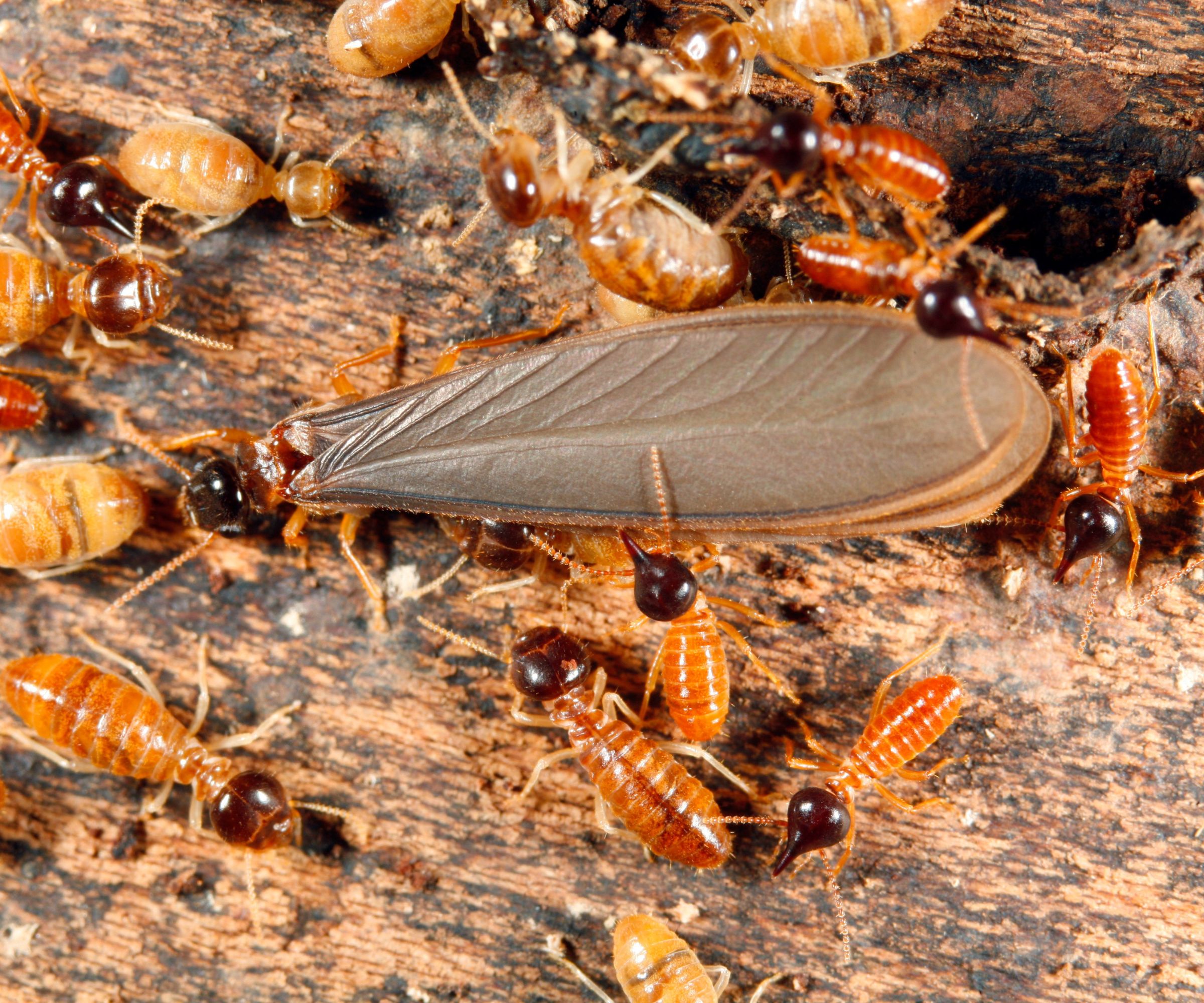
While DIY methods to remove flying termites will see a decrease of their presence in your home, in order to tackle any colonies that may have taken up camp in hard-to-access spaces in your home, it's essential to hire professionals to get the job done effectively and safely. They will have specialized tools and knowledge to tailor treatments to your home and the specific size and type of termite infestation you have.
'Since the presence of swarmers indicates that there is a colony in the area, I cannot stress enough the importance of having your home inspected by a pest management professional if you find a swarm,' says James Agardy. 'A swarm is an indication of a mature colony that is at least 3 years old and is either already residing and causing damage in a structure or in close proximity to the structure.
'Termites cause over 5 billion dollars of damage annually, and their presence is often difficult to detect without proper training. Your home is your biggest investment so if you suspect you may have termites, it’s important to take action quickly.'
5. Use deterrents
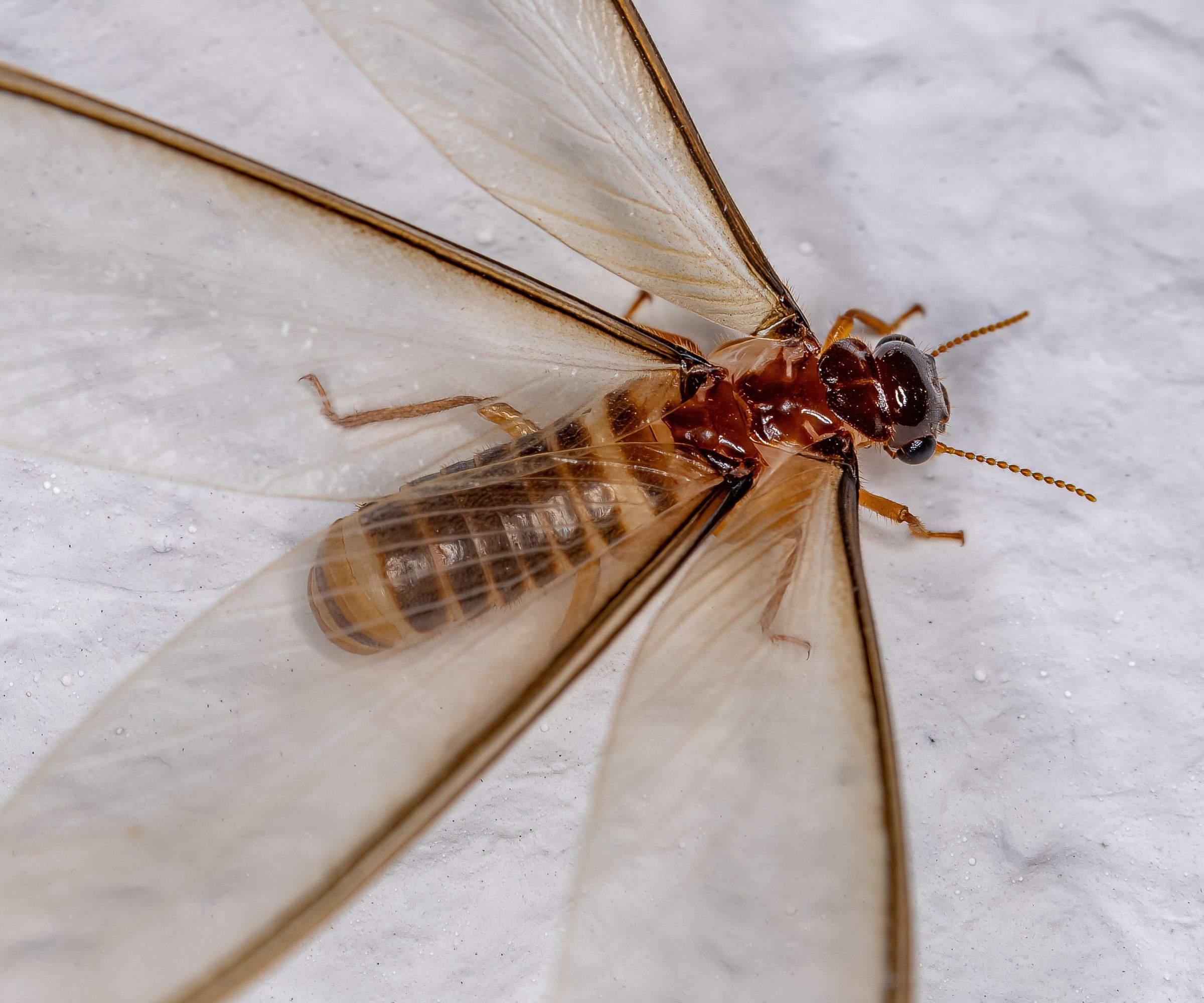
After the pest removal experts have properly and entirely tackled your flying termite problem, it is important to implement some deterrents around your property to prevent them from returning. For example, you can apply termiticides or natural insecticides around the perimeter of your home and on wood furniture.
There are a few options that can be highly effective:
1. Borax solution: Borax is a natural mineral that is toxic to termites. Mix borax with water to create a solution to spray it onto wood furniture. Make sure the solution penetrates into cracks and crevices where termites may hide.
2. Orange oil: This orange oil from Walmart contains d-limonene, which is poisonous to termites. Spray pure orange oil or use a solution of diluted orange oil directly onto wood furniture or areas where flying termites may be drawn.
3. Neem oil: Neem oil is an effective insecticide and repellent. Mix neem oil with water to make a spray to deter termites.
4. Vinegar solution: Vinegar contains acetic acid, which can help deter termites. You can clean with vinegar anywhere flying termites might be attracted to, like anywhere with standing water or wood. Mix equal parts of vinegar and water to make a spray.
5. Essential oils: Certain essential oils, such as clove oil, tea tree oil, and cedar oil have repellent properties against termites. Dilute the essential oils with water and spray them near entry points.
Using these natural options is a great way to protect your property from these pests without causing harm to pets or items. Just be sure to test a small area of the wood furniture first to ensure the treatment does not cause any damage or discoloration.
FAQs
Why are there suddenly flying termites in my home?
'Swarms of flying termites are not a definite indication of a bug-ridden home. It may imply that the wind blew them up the street or they have flown over to a property from neighbors’ homes,' explains Brett Bennett, Director of Operations, PURCOR Pest. 'Swarmer’s wings are quite fragile and not as strong as a fly’s wings. Alates (winged termites) are naturally tossed about in a stiff breeze.
'Daytime is their favorite time to swarm. Swarmers outside in a yard of a home, usually suggest that there is a nest on an adjacent property.'
What should you do if there is a flying termite swarm in your yard?
'If a swarm occurs outside, there is not much that can be done. It will be over relatively fast and then they will either go back underground or fall prey to other animals,' explains Damian Marcelo.
'If possible, some intact samples should be collected for identification by a professional. If a swarm occurs inside your home, the first thing that should be done is to take note of where they emerged from. Next, collect some samples that are as intact as possible for identification, and contact a professional to come and identify the insect and inspect the home.'
Remember, prevention is key to avoiding termite infestations, so regular maintenance and vigilance are important for keeping your home termite-free. If you have had an infestation already or fear your home may be vulnerable to one, it may be a good idea to schedule regular termite inspections to catch any infestations early and prevent further damage to your home.







